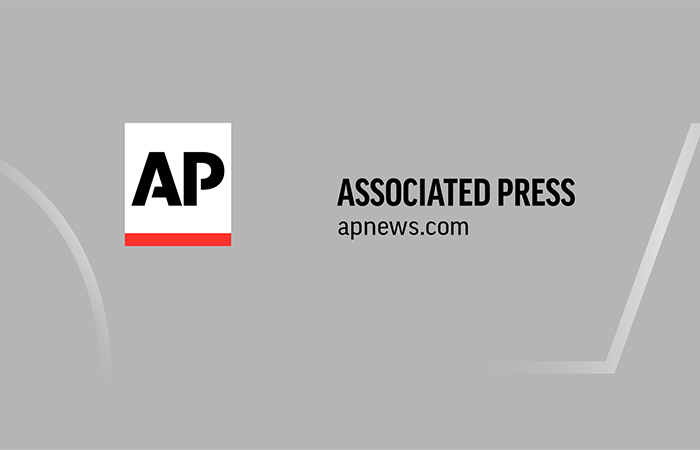The Crossroads of Hope and Uncertainty: The Future of Migrant Entry in America
January 18, 2025, 5:14 pm
The U.S.-Mexico border is a tapestry woven with stories of hope, desperation, and uncertainty. At the heart of this narrative is CBP One, an app that has become a lifeline for many migrants seeking a legal pathway into the United States. But as political winds shift, this beacon of hope faces an uncertain future.
CBP One emerged as a response to chaos. Before its inception, the border was a chaotic landscape, where migrants faced perilous journeys and uncertain fates. The app, introduced during the Trump administration and expanded under Biden, streamlined the process for migrants, allowing them to schedule appointments for asylum claims. It transformed the border from a chaotic free-for-all into a more orderly system. For many, it was a salvation.
Take the story of Martha Rosales, a woman who opened her home to migrants in Tijuana. She became a surrogate mother to many, providing shelter, meals, and emotional support. Her home is a sanctuary amid the storm. Migrants like Dayron Garcia, a Cuban doctor, describe Rosales’ house as a family haven. The app allowed him to enter the U.S. legally, a stark contrast to the treacherous paths many had to navigate before.
Yet, the app's success has drawn criticism. Detractors argue it prioritizes a lottery system, leaving behind those who have lived in the U.S. for years, contributing to society but lacking legal status. The debate is fierce. Supporters hail it as a success, while critics see it as a flawed system that needs reform.
As demand for appointments skyrockets, the competition for slots resembles a high-stakes lottery. With an average of 280,000 people vying for just 1,450 daily slots, the pressure is palpable. Migrants, like fans scrambling for concert tickets, refresh their screens, hoping for a chance. This race against time adds to the anxiety that permeates the migrant community.
The political landscape is shifting. With the potential return of Trump to the White House, the future of CBP One hangs in the balance. Trump’s allies view the app as overly generous, a gateway that encourages immigration. The fear among migrants is tangible. Will the app be dismantled? Will they be forced back into the shadows?
Kristi Noem, Trump’s pick for Homeland Security, is already facing scrutiny. She has echoed Trump’s tough stance on immigration, vowing to end CBP One and reinstate policies that require asylum-seekers to wait in Mexico. Her confirmation hearings reveal a pressure cooker environment, where every word is weighed against the backdrop of national security and immigration reform.
Noem’s approach is a reflection of a broader Republican sentiment. The southern border is viewed as a battleground, a war zone where tough leadership is needed. Critics, however, question her qualifications. Can she manage the complexities of immigration while ensuring national security? The stakes are high, and the answers are murky.
The exodus from Cuba is a poignant example of the desperation driving migration. Political unrest and economic hardship have pushed many to seek refuge in the U.S. For them, CBP One represented a glimmer of hope. Yoandis Delgado, a Cuban cook, described the app as a “gift from God.” It provided a sense of possibility amid despair.
But the future is uncertain. Migrants in Mexico are anxious, fearing the loss of their lifeline. Even those already in the U.S. worry about the expiration of their parole, which lasts only two years. The clock is ticking, and the fear of being sent back looms large.
The emotional toll is immense. Rosales, who has dedicated her life to helping migrants, feels the weight of their struggles. She cries for them, sharing in their pain and joy. Her home is a microcosm of the larger migrant experience—filled with laughter, tears, and the relentless pursuit of a better life.
As the political landscape evolves, so too does the narrative at the border. The future of CBP One is uncertain, but its impact is undeniable. It has changed lives, offering a pathway where there was once only despair. The stories of those who have found refuge through the app are a testament to the resilience of the human spirit.
In the end, the border is more than a line on a map. It is a crossroads of hope and uncertainty. As the political winds shift, the fate of many hangs in the balance. Will the light of CBP One continue to shine, or will it be extinguished in the name of stricter immigration policies? Only time will tell. But for now, the stories of those who seek a better life continue to unfold, each one a thread in the complex tapestry of America’s immigration narrative.
CBP One emerged as a response to chaos. Before its inception, the border was a chaotic landscape, where migrants faced perilous journeys and uncertain fates. The app, introduced during the Trump administration and expanded under Biden, streamlined the process for migrants, allowing them to schedule appointments for asylum claims. It transformed the border from a chaotic free-for-all into a more orderly system. For many, it was a salvation.
Take the story of Martha Rosales, a woman who opened her home to migrants in Tijuana. She became a surrogate mother to many, providing shelter, meals, and emotional support. Her home is a sanctuary amid the storm. Migrants like Dayron Garcia, a Cuban doctor, describe Rosales’ house as a family haven. The app allowed him to enter the U.S. legally, a stark contrast to the treacherous paths many had to navigate before.
Yet, the app's success has drawn criticism. Detractors argue it prioritizes a lottery system, leaving behind those who have lived in the U.S. for years, contributing to society but lacking legal status. The debate is fierce. Supporters hail it as a success, while critics see it as a flawed system that needs reform.
As demand for appointments skyrockets, the competition for slots resembles a high-stakes lottery. With an average of 280,000 people vying for just 1,450 daily slots, the pressure is palpable. Migrants, like fans scrambling for concert tickets, refresh their screens, hoping for a chance. This race against time adds to the anxiety that permeates the migrant community.
The political landscape is shifting. With the potential return of Trump to the White House, the future of CBP One hangs in the balance. Trump’s allies view the app as overly generous, a gateway that encourages immigration. The fear among migrants is tangible. Will the app be dismantled? Will they be forced back into the shadows?
Kristi Noem, Trump’s pick for Homeland Security, is already facing scrutiny. She has echoed Trump’s tough stance on immigration, vowing to end CBP One and reinstate policies that require asylum-seekers to wait in Mexico. Her confirmation hearings reveal a pressure cooker environment, where every word is weighed against the backdrop of national security and immigration reform.
Noem’s approach is a reflection of a broader Republican sentiment. The southern border is viewed as a battleground, a war zone where tough leadership is needed. Critics, however, question her qualifications. Can she manage the complexities of immigration while ensuring national security? The stakes are high, and the answers are murky.
The exodus from Cuba is a poignant example of the desperation driving migration. Political unrest and economic hardship have pushed many to seek refuge in the U.S. For them, CBP One represented a glimmer of hope. Yoandis Delgado, a Cuban cook, described the app as a “gift from God.” It provided a sense of possibility amid despair.
But the future is uncertain. Migrants in Mexico are anxious, fearing the loss of their lifeline. Even those already in the U.S. worry about the expiration of their parole, which lasts only two years. The clock is ticking, and the fear of being sent back looms large.
The emotional toll is immense. Rosales, who has dedicated her life to helping migrants, feels the weight of their struggles. She cries for them, sharing in their pain and joy. Her home is a microcosm of the larger migrant experience—filled with laughter, tears, and the relentless pursuit of a better life.
As the political landscape evolves, so too does the narrative at the border. The future of CBP One is uncertain, but its impact is undeniable. It has changed lives, offering a pathway where there was once only despair. The stories of those who have found refuge through the app are a testament to the resilience of the human spirit.
In the end, the border is more than a line on a map. It is a crossroads of hope and uncertainty. As the political winds shift, the fate of many hangs in the balance. Will the light of CBP One continue to shine, or will it be extinguished in the name of stricter immigration policies? Only time will tell. But for now, the stories of those who seek a better life continue to unfold, each one a thread in the complex tapestry of America’s immigration narrative.

